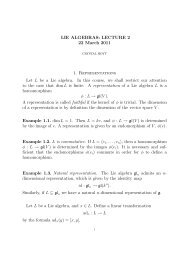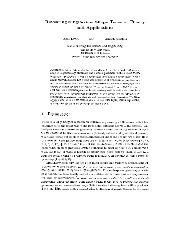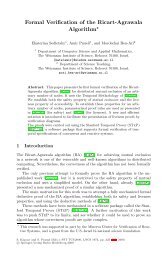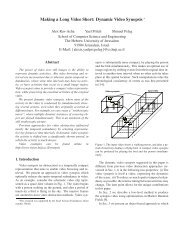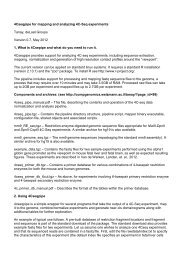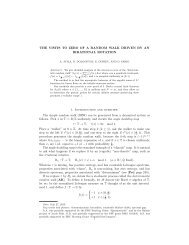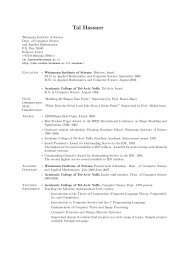Introduction to Computer Vision Final Exam (Example)
Introduction to Computer Vision Final Exam (Example)
Introduction to Computer Vision Final Exam (Example)
You also want an ePaper? Increase the reach of your titles
YUMPU automatically turns print PDFs into web optimized ePapers that Google loves.
Q1:<br />
Q2:<br />
• Answer the following 5 questions.<br />
<strong>Introduction</strong> <strong>to</strong> <strong>Computer</strong> <strong>Vision</strong><br />
<strong>Final</strong> <strong>Exam</strong> (<strong>Exam</strong>ple)<br />
• You may write your answers either in Hebrew or in English.<br />
• Length of exam: 3 hours.<br />
Explain in short the following terms:<br />
1. Retina and pho<strong>to</strong>recep<strong>to</strong>rs.<br />
2. Visual area V1.<br />
Good luck!<br />
Let f(x, y) be an M × N image, and let F (u, v) be its Fourier transform. Let g(x, y) be an<br />
image of dimensions (3M) × (3N), whose Fourier transform G(u, v) is generated from F (u, v) by<br />
inserting two rows of zeros (0’s) between every two rows of F , and two columns of zeros (0’s)<br />
between every two columns of F :<br />
⎧<br />
⎪⎨<br />
G(u, v) =<br />
⎪⎩<br />
F (k, l) u = 3k, v = 3l<br />
k = 0, ..., M − 1<br />
l = 0, ..., N − 1<br />
0 otherwise<br />
What does the image g(x, y) look like in terms of f(x, y)? Show mathematically and explain the<br />
result in short. Remember that g(x, y) is of size (3M) × (3N).<br />
1
Q3:<br />
Q4:<br />
Q5:<br />
1. How many point correspondences are needed <strong>to</strong> recover a homography between two images?<br />
Explain why.<br />
2. 12 points are painted on a dark plane. 5 points are colored pure red, 5 are colored pure<br />
green, and 2 are colored white. Two cameras take pictures of the plane. One camera is<br />
equipped with a red filter (doesn’t see pure green color) and one camera is equipped with<br />
a green filter (doesn’t see pure red color). How many points does each camera see? Is this<br />
number sufficient in order <strong>to</strong> compute the homography relating the two images? Explain<br />
why.<br />
A camera is imaging an object at two time instances. Point correspondences are given across the<br />
two images. Can depth be recovered if:<br />
1. There is only a camera rotation between the two images?<br />
2. There is only an object rotation between the two images?<br />
We mentioned in class two problems that can be solved by SVD fac<strong>to</strong>rization: (1) Recovering of<br />
3D structure and motion from a collection of 2D images, and (2) Pho<strong>to</strong>metric stereo (recovering<br />
shape and lighting from a collection of images).<br />
Choose ONE of the above problems and answer the following questions:<br />
1. What is the input matrix?<br />
2. What are the underlying assumptions about the scene or the camera that allow you <strong>to</strong> use<br />
fac<strong>to</strong>rization?<br />
3. What is the rank of the input matrix if these assumptions hold (assuming there is no noise)?<br />
4. What kind of ambiguity remains after the SVD step? Explain in short how this ambiguity<br />
can be removed.<br />
2



